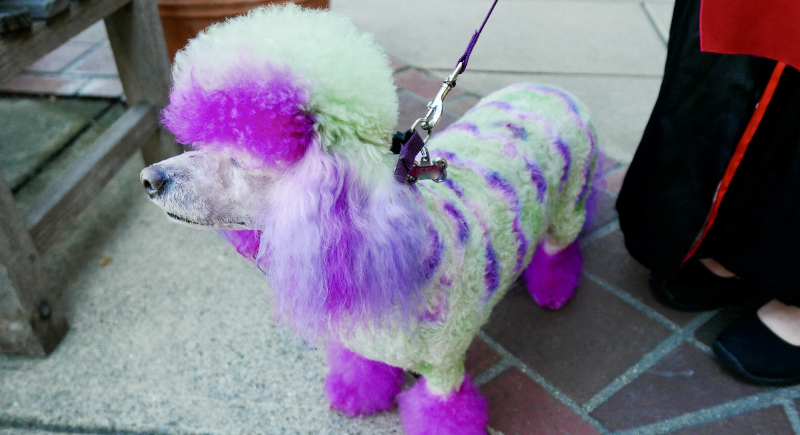The Internet Can’t Get Over This ‘Cookies & Cream’ Flavored Golden Retriever
A golden retriever with black-and-white patches stopped people mid-scroll on TikTok. Viewers immediately began guessing its breed, convinced they were seeing something rare. The video quickly drew millions of views, fueled by curiosity about the dog’s unusual coat. Was it a genetic twist, a camera filter, or something else entirely?
Many Mistook Him for a Rarely Seen Breed
Viewers didn’t agree on what they were looking at. A few suggested he looked like an Australian shepherd with golden retriever features. Some guessed he had English setter lineage based on his speckled coat. Several people assumed this was a merle-colored retriever, even though that doesn’t naturally occur in the breed.
The mystery ended when the creator explained the look came from pet-safe dye applied by a professional groomer. The coloring appeared too consistent to seem artificial at first glance. Commenters moved away from guessing the breed and started asking how it was done. The initial confusion came from the pattern more than the hues. It mimicked natural markings found in other breeds, which made the reveal more surprising. The explanation didn’t end the curiosity, though—it redirected it toward grooming and dog-safe products.
Safe Products Exist
Plenty of dog owners have looked at pet-safe dye and thought, “Could I try this at home?” It seems harmless enough—just a splash of tint during bath time—but it’s more complicated than it looks. Professional groomers use products made specifically for animals. These formulas skip the harsh ingredients found in human dye and are tested to avoid skin irritation or toxicity.
The actual process is simple but precise. It usually takes place during a bath and lasts about 10 to 20 minutes. The dye has to stay away from sensitive areas like the eyes and mouth, which isn’t easy if your dog won’t sit still.
Using human hair dye is dangerous and should never be an option. It contains chemicals that can burn the skin or poison your dog if they lick it. Even natural dyes like beet juice or spinach extract can cause problems if your dog over-grooms. Vets recommend letting a trained groomer handle it, especially the first time.
Experts Have Contrasting Views on the Practice

Image via iStockphoto/Laura Fay
Meanwhile, veterinarians and pet professionals do not all agree on the ethics of dyeing a dog. Some practitioners say it’s acceptable as long as the dog remains relaxed and the products are safe. On the other hand, various individuals oppose the trend completely. One concern centers on the fact that the aesthetic outcome benefits the owner, not the dog. Some believe that non-essential procedures based on appearance blur ethical lines.
There are also legal restrictions in a few U.S. states, including Florida, South Carolina, and Maine, where dyeing pets is technically illegal, though rarely enforced. One veterinary dermatologist noted that decisions like this often fall under the owner’s rights. That includes procedures such as trimming fur or scheduling surgeries.
Still, the conversation keeps returning to the dog’s experience. Behavior signals matter more than the outcome. If a dog stiffens, pulls away, or shows signs of distress, the coloring session should stop immediately. Professionals who support the practice emphasize that it must center on the animal’s comfort.